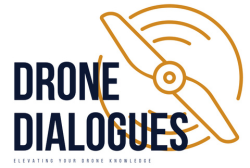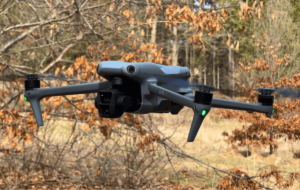With the DJI Avata 2, DJI has once again pushed the boundaries of FPV (First Person View) drone technology, addressing many of the shortcomings of previous models. Unlike DIY FPV systems, which often require extensive setup and technical know-how, the Avata 2 is designed for instant flight right out of the box. This accessibility makes it an ideal choice for beginners while still offering a thrilling acrobatic experience for veteran pilots.
If you’re in the market for a drone to capture serene aerial photos or cinematic video, the DJI Avata 2 may not be the best fit. This drone is tailored for adrenaline junkies and thrill-seekers, designed to capture exhilarating footage in places where traditional drones dare not venture. On paper, the Avata 2 appears to be the perfect tool for the job, but only by taking it to the skies can we truly determine if it lives up to the hype.
larger sensor to produce better-quality images
The DJI Avata 2 boasts a larger sensor compared to its predecessor, the original Avata, with a 1/1.7 size sensor replacing the previous 1/1.3 sensor. This upgrade represents a significant leap in image quality, evident in the impressive video output of this drone. The quality now rivals that of the DJI Mini 4 Pro, known for its exceptional imaging capabilities.
Unlike conventional camera drones equipped with a 3-axis gimbal for stabilization, the DJI Avata 2 relies on digital stabilization, known as Rocksteady by DJI. This technology is akin to what you’d find in action cameras like the DJI Action 4 or GoPro Hero 12. Despite lacking a traditional gimbal, the digital stabilization ensures smooth and steady footage, even in dynamic flight maneuvers.
Overall, the Avata 2 demonstrates a notable improvement over its predecessor, offering video footage of such quality that there’s no need to attach an external action camera. This makes it a standout choice among FPV drones, delivering exceptional image quality without compromising on agility or performance.
Options for FOV and 10-bit recording
The DJI Avata 2 excels in low-light conditions, thanks to its larger sensor, which produces cleaner footage with well-controlled flaring, vignetting, and distortion, particularly in dim lighting. However, this comes at the expense of a narrower field of view. Nonetheless, the drone offers flexibility with three angle options: standard, wide, or ultra-wide, catering to different shooting scenarios. Personally, I prefer the narrower field of view and primarily flew with that setting.
A significant upgrade for those involved in post-processing is the inclusion of 10-bit D-log M color mode for recording. This enhancement offers greater flexibility compared to the D-cinelike color mode found in the original DJI Avata. I found the 10-bit recording to be highly beneficial for achieving high-quality results during editing. Furthermore, the dynamic range has been notably improved by two stops, minimizing detail loss in both shadows and highlights, a substantial improvement over the first Avata drone.
Sturdy construction quality and easily accessible ports
One of the biggest improvements in the DJI Avata 2 is the redesigned placement of its USB-C and MicroSD card slot, addressing a common complaint from users of the original Avata. In the previous model, accessing these ports was cumbersome, hidden inside one of the prop guards. However, with the Avata 2, these ports are now conveniently located on the lower side of the drone, between and underneath the props. Additionally, the Avata 2 introduces the capability to charge the battery in the drone via USB-C, adding to its convenience. Moreover, with 48GB of onboard data space, users can potentially forgo a MicroSD card if needed.
In terms of durability, the Avata 2 proves to be a rugged and resilient drone, essential qualities for an FPV drone that is likely to encounter crashes. With integrated prop guards, robust materials, and camera guards, the Avata 2 can withstand impacts remarkably well. During testing, the drone endured multiple crashes, including a high-speed collision with a fallen tree, yet emerged unscathed. Drawing from experience with the older model, which also exhibited impressive durability despite numerous crashes, I am confident in the Avata 2’s ability to withstand rough handling.
Furthermore, the Avata 2 incorporates several features to enhance flight stability and recovery. “Turtle Mode” allows users to quickly flip the drone right-side-up if it ends up upside down after a crash, enabling swift recovery. Additionally, the drone features a “Return to Home” function and a brake function, providing quick and reliable ways to regain control or halt the drone’s movement when needed. Binocular fisheye sensors further improve stability, particularly at low altitudes or when flying indoors, enhancing the overall flying experience and minimizing the risk of accidents.
At last, a noiseless FPV drone!
The Avata 2 marks a significant improvement in addressing one of the key drawbacks of DJI’s FPV drones: noise pollution. Unlike its predecessor, which emitted a high-pitched scream that could be particularly bothersome, the Avata 2 boasts a much quieter operation, making it one of the most inconspicuous drones in the skies. This reduction in noise level not only enhances the flying experience for users but also mitigates potential disturbance to people and animals in the vicinity.
Compared to the DJI Mavic 3 Pro, another relatively quiet UAV, the Avata 2 produces a similar level of noise but with a slightly higher pitch. However, the difference in tone makes the Avata 2 even less noticeable, further improving its overall user experience.
In terms of performance, the Avata 2 offers impressive capabilities that enable users to fly fast and far with ease. With a flight time of up to 23 minutes, users can enjoy extended flights without feeling constrained by battery limitations. Moreover, the support for PD fast charging and the innovative two-way charging hub, which optimizes power distribution among multiple batteries, enhances the overall efficiency and longevity of flight sessions.
The Avata 2 excels in agility, capable of reaching speeds of 8m/s in normal mode, 15m/s in sport mode, and an impressive 27 m/s in manual mode. While manual mode offers advanced controls for experienced pilots, beginners can gradually familiarize themselves with the drone’s capabilities through the DJI flight simulator app available on Android and iOS platforms.
Furthermore, the Avata 2 delivers commendable performance in capturing slow-motion video footage. Despite limitations to 4k 60fps and 2.7k 120fps resolutions, users can achieve impressive results with sharp image quality, particularly when shooting in 2.7k 120fps mode. Overall, the Avata 2 sets a new standard for FPV drones, offering a perfect blend of performance, versatility, and user-friendly features.

New functions are enabled via a new motion controller
The introduction of advanced trick capabilities in the Avata 2 adds a new dimension of excitement to FPV flying. With the DJI RC Motion 3 controller, users can effortlessly execute flips, rolls, and 180-degree drifts with a simple push of the joystick. This feature not only enhances the thrill of flying but also makes complex maneuvers more accessible to users of all skill levels. However, while the current trick options are exhilarating, many enthusiasts hope to see further expansion, particularly in the realm of ACRO mode. Personally, I am eager to see the inclusion of steep vertical dives, which would add an extra layer of excitement to FPV flying.
Despite initial concerns about its smaller size, the RC Motion 3 controller proved to be an excellent companion for navigating the skies. Its compact design offers a natural and precise flight experience, once users become accustomed to it. Additionally, the inclusion of an AR cursor within the menu system enhances usability, providing a convenient interface for adjusting settings and preferences.
The integration of GFSK Sidelink technology in the RC Motion 3 controller significantly improves signal stability and reduces latency, enhancing overall flight performance and user confidence. Furthermore, the addition of a two-stop throttle feature allows users to lock the drone’s position and prevent unwanted rotation, particularly useful when using the goggles interface during flight. These advancements not only elevate the user experience but also contribute to safer and more enjoyable flying sessions with the Avata 2.
Upgraded headset
The latest iteration of DJI Goggles, the Goggles 3, represents a significant leap forward from its predecessor, the Goggles 2. Right from the moment of wearing them, I noticed a marked improvement in comfort, attributed to the integrated forehead support that alleviates pressure on the face. Furthermore, the addition of a one-tap defogging feature enhances usability by increasing fan speeds to reduce condensation on the internal lenses—a thoughtful addition for those flying in varying weather conditions.
With low latency transmission capabilities of up to 1080p at 100fps and a wide field of view, coupled with the new SyncSmooth display smoothing technology, immersing oneself in the Avata 2 flight experience is nothing short of captivating. What’s more, the inclusion of front-facing cameras enables seamless passthrough video at the touch of a button, eliminating the need to remove the goggles to view the surroundings. Adjusting the diopters to match individual eyesight is a breeze, and wireless sharing of the user’s view can be effortlessly achieved by connecting a phone to the goggles via Wi-Fi and the DJI Fly app.
Adding to its versatility, the Goggles 3 can also serve as a platform for viewing panoramic and 3D videos, simply by importing them onto an SD card and accessing them through the intuitive menu system. Moreover, utilizing the head tracking feature for controlling the direction of flight adds an extra layer of interactivity, although mastering this function may require some practice.
However, a lingering gripe with DJI’s drones, including the Avata 2, lies in their software requirements. The mandatory online activation process, coupled with the need to log in with an account, can be cumbersome, particularly for users who prefer offline operation. While this requirement may be justified for security reasons, it remains a point of contention for some users.
In summary
The DJI Avata 2 represents a remarkable evolution from its predecessor, setting a new standard in the realm of FPV (first person view) drones. Despite being less than two years old, the Avata 2 delivers a groundbreaking leap forward in nearly every aspect, offering users an unparalleled immersive flying experience. As someone who has been navigating DJI’s FPV drones since their inception, I found the Avata 2 to inspire confidence and push me to explore more daring flights.
For those seeking an accessible entry point into FPV drone flight without delving into the complexities of DIY systems, the Avata 2 emerges as the ideal choice. Its myriad improvements leave little room for criticism, elevating it to near perfection in the realm of FPV drones. Even the cumbersome initial activation process, while an annoyance, pales in comparison to the Avata 2’s overall excellence.
In light of its exceptional performance and user-friendly design, I’m compelled to award the DJI Avata 2 a perfect 9/10 score. It’s an outstanding drone that sets a new benchmark in FPV drone technology. If you’ve ever harbored an interest in exploring the world of FPV drones, the Avata 2 unquestionably stands out as the ultimate choice.





